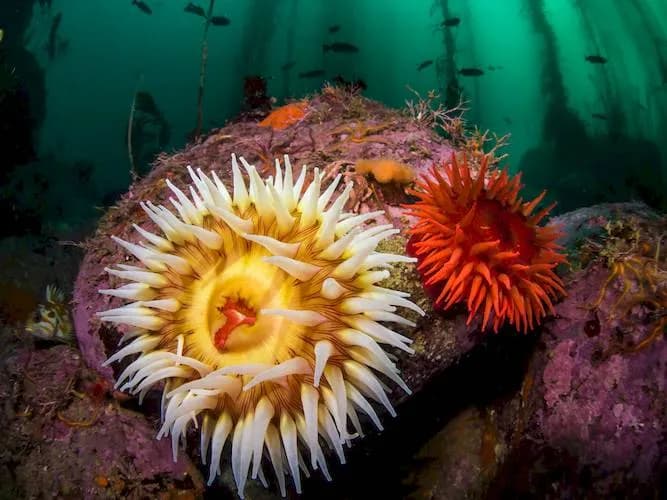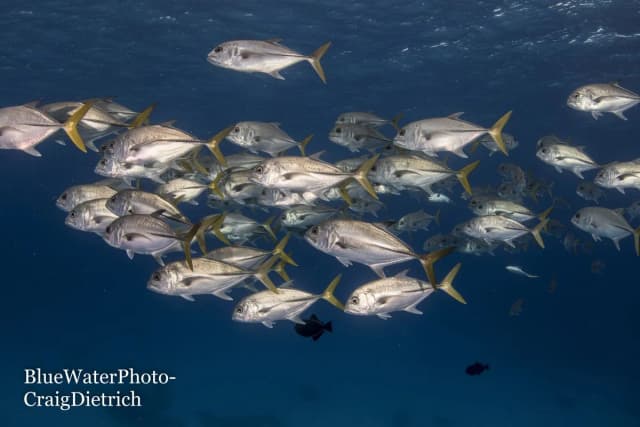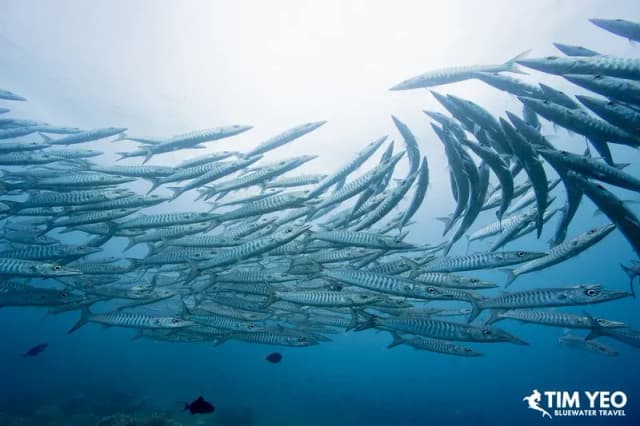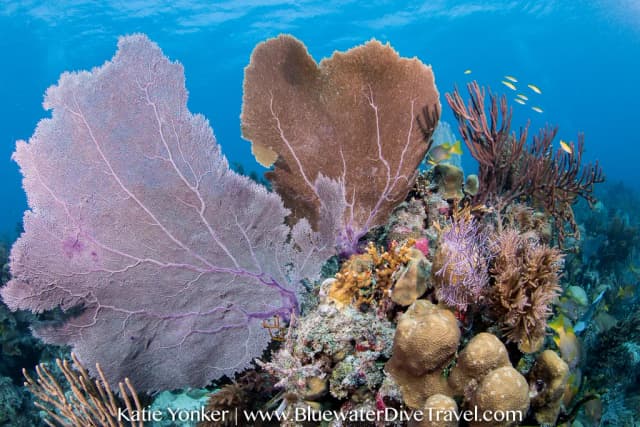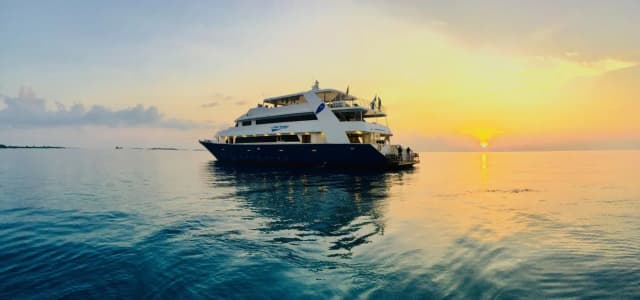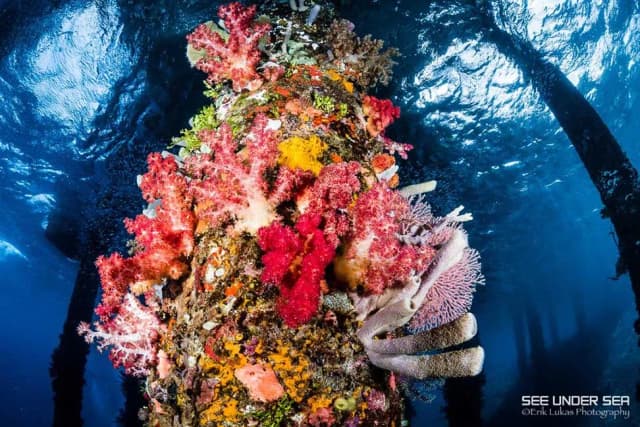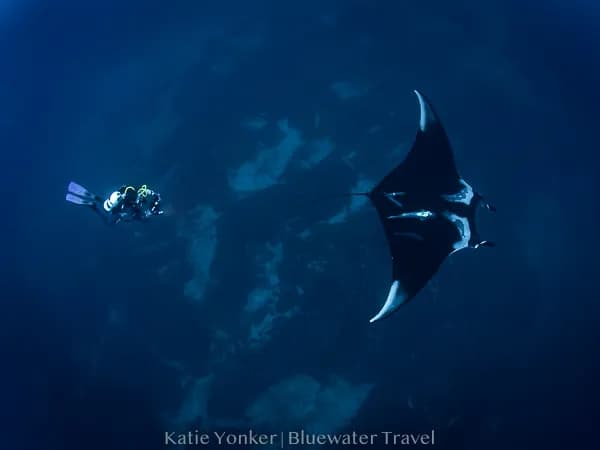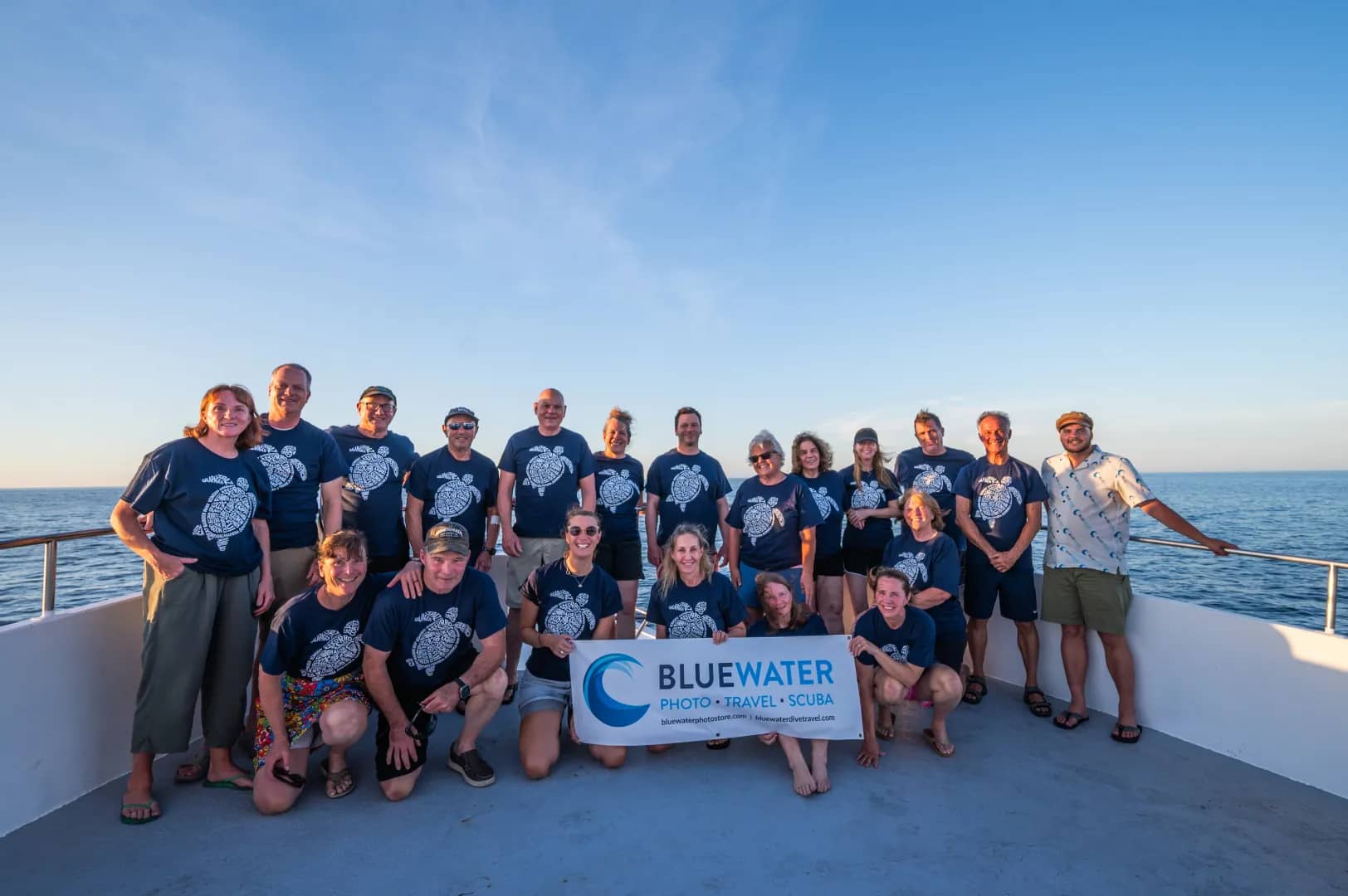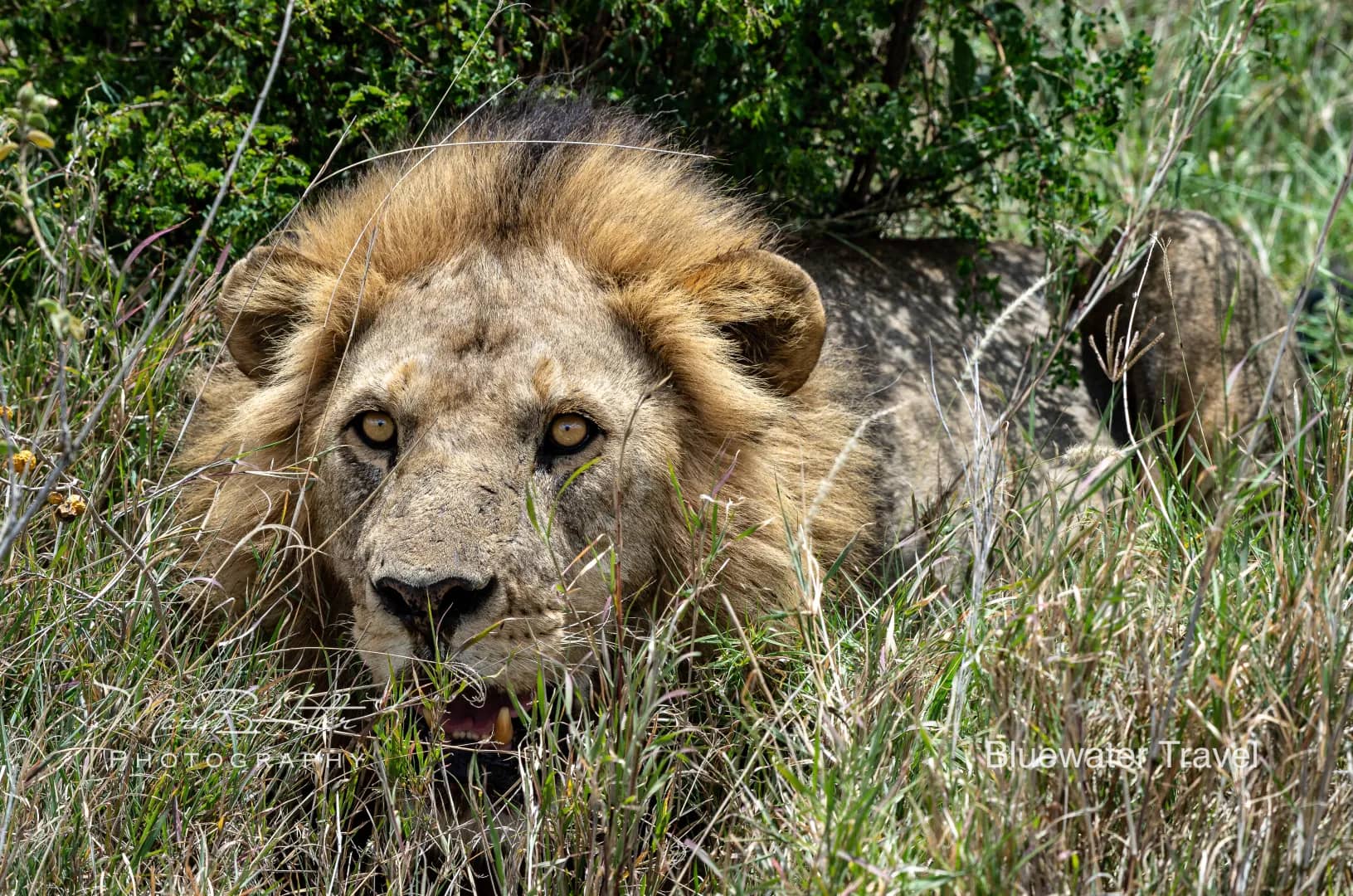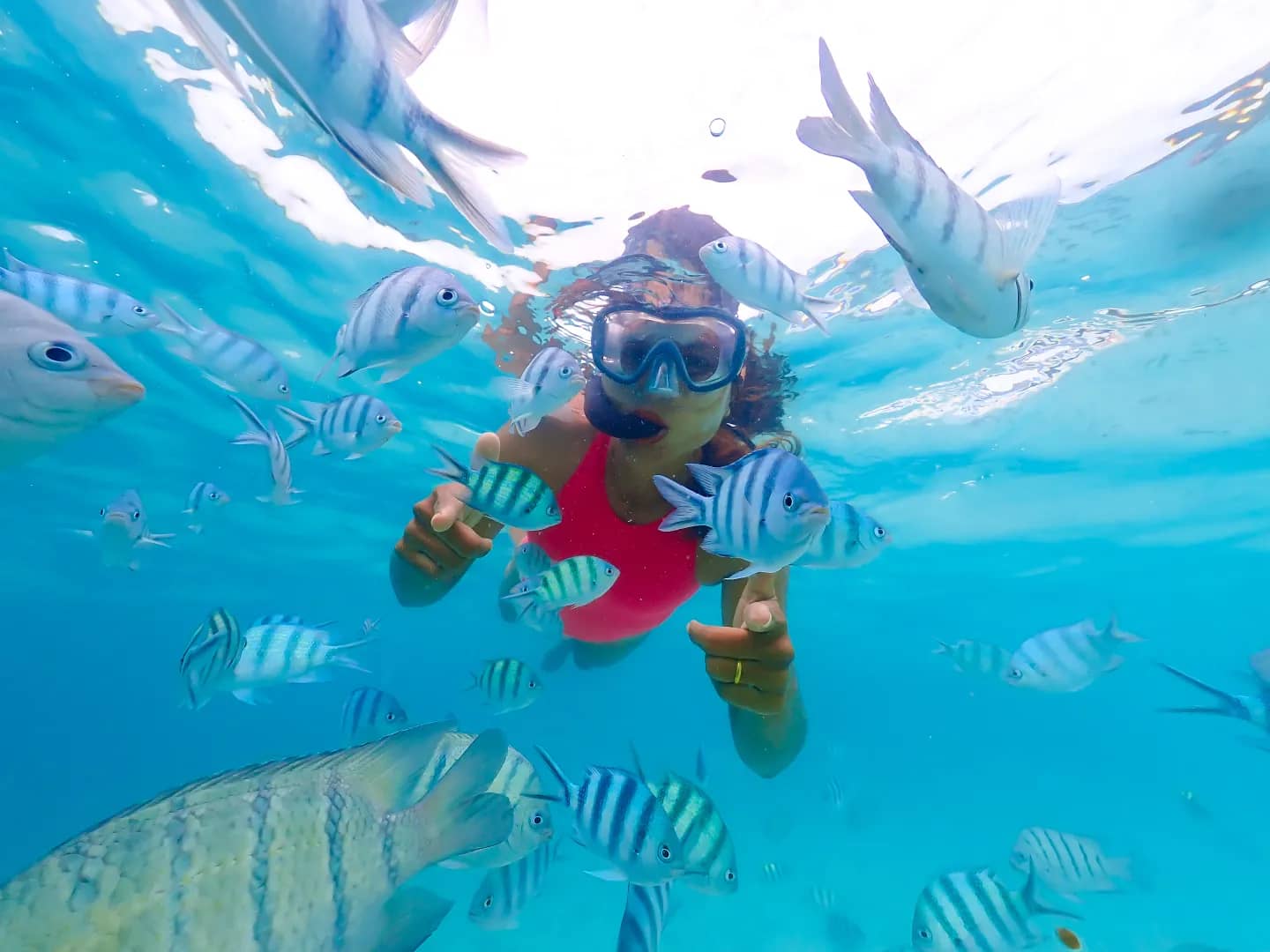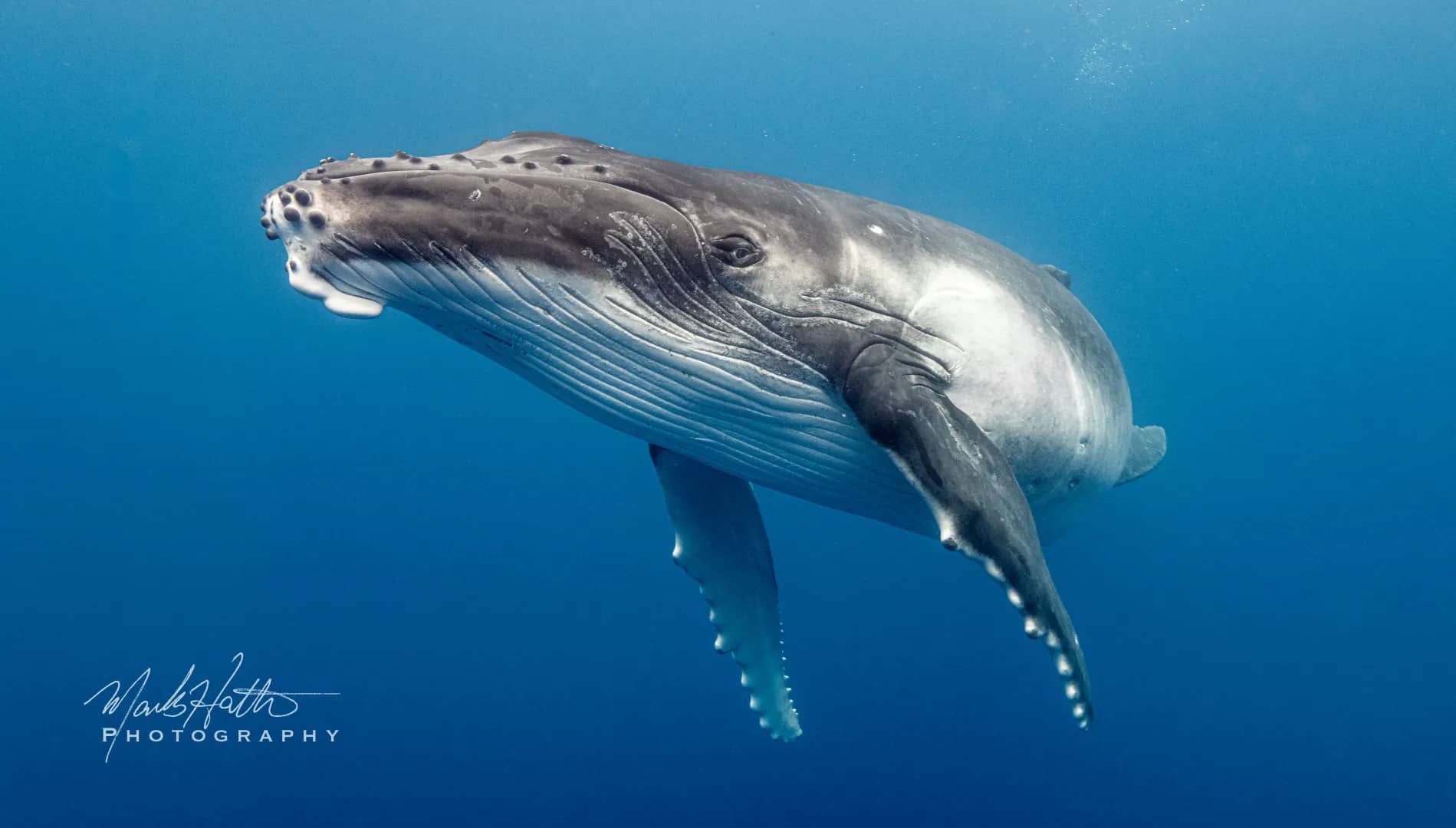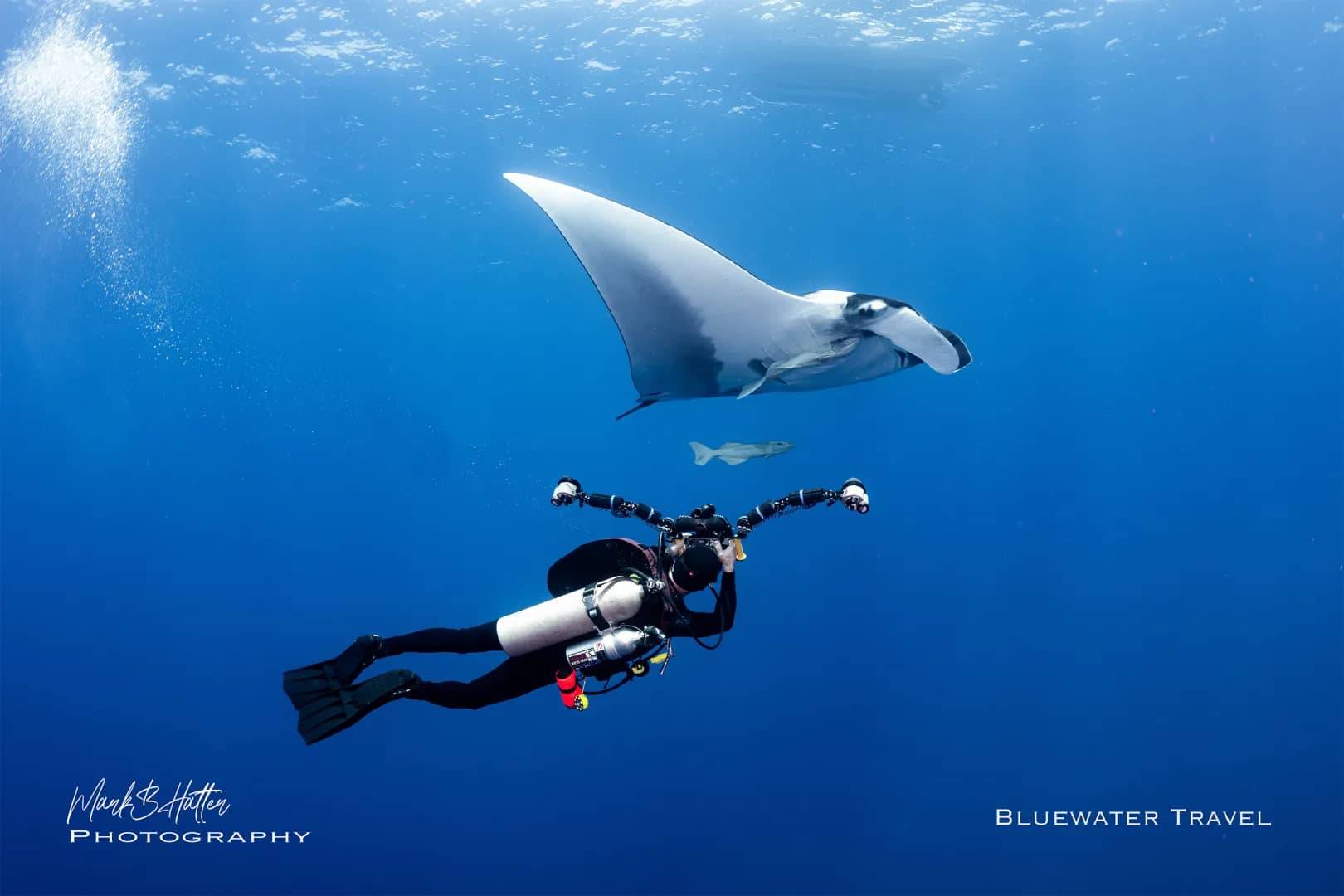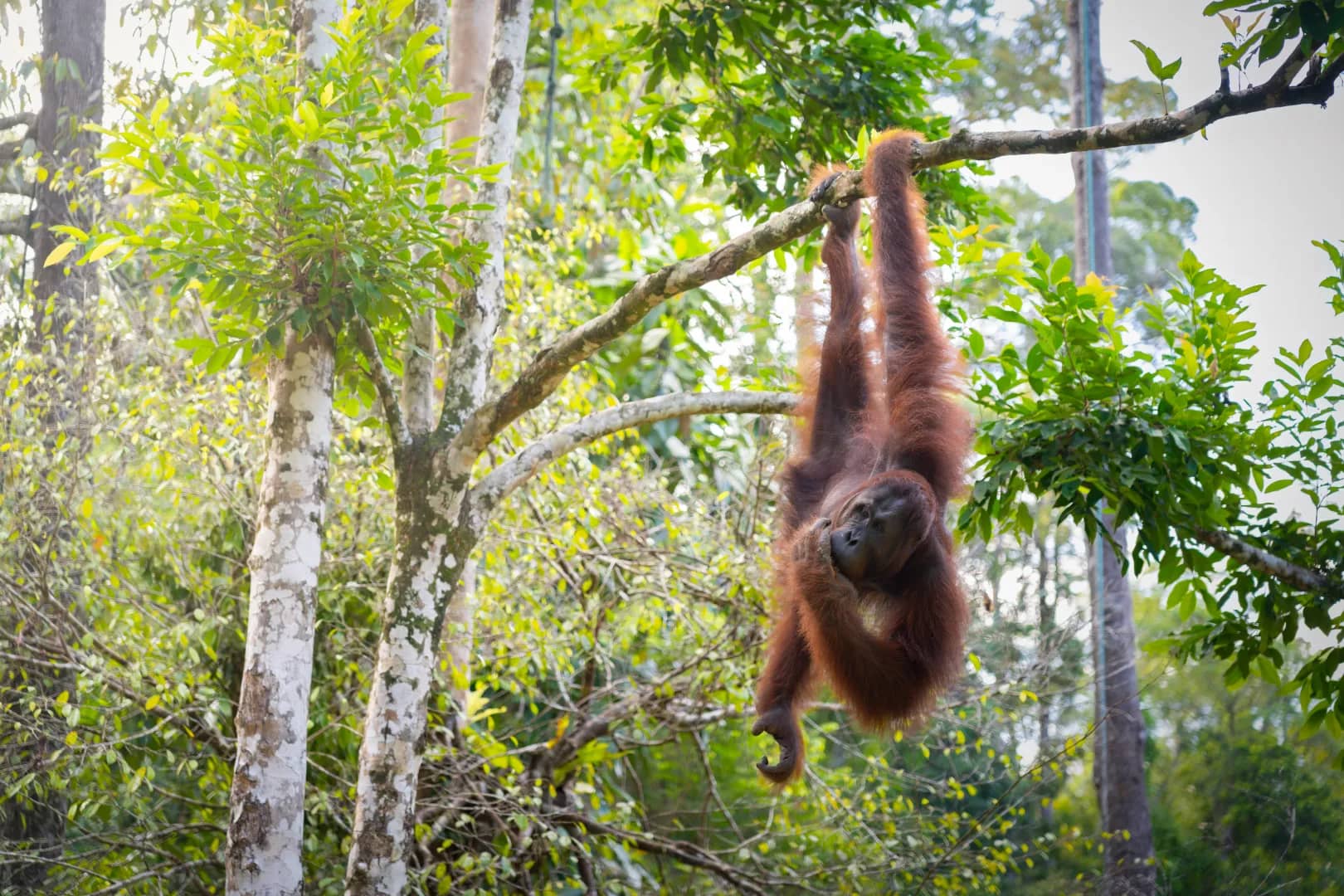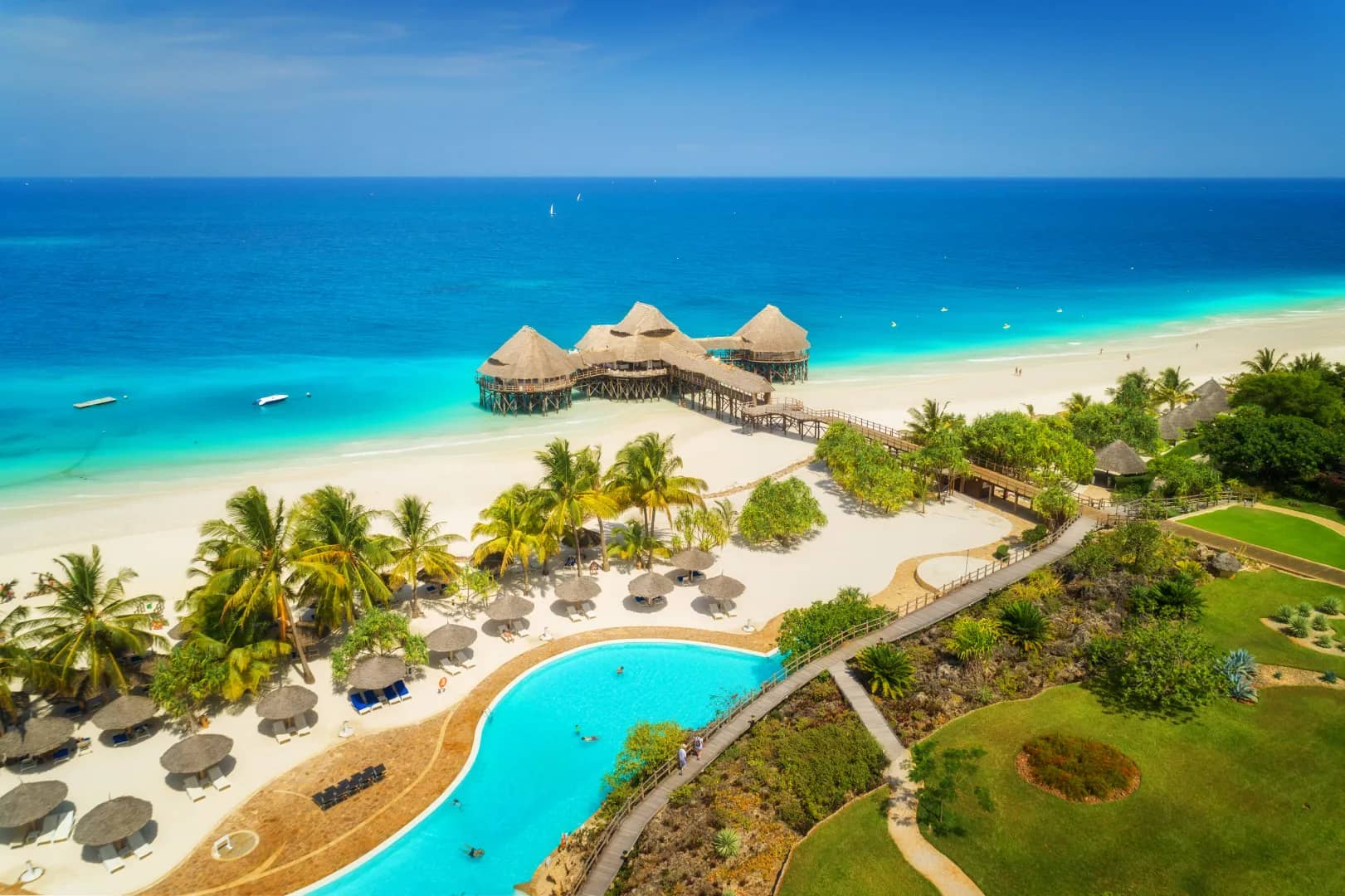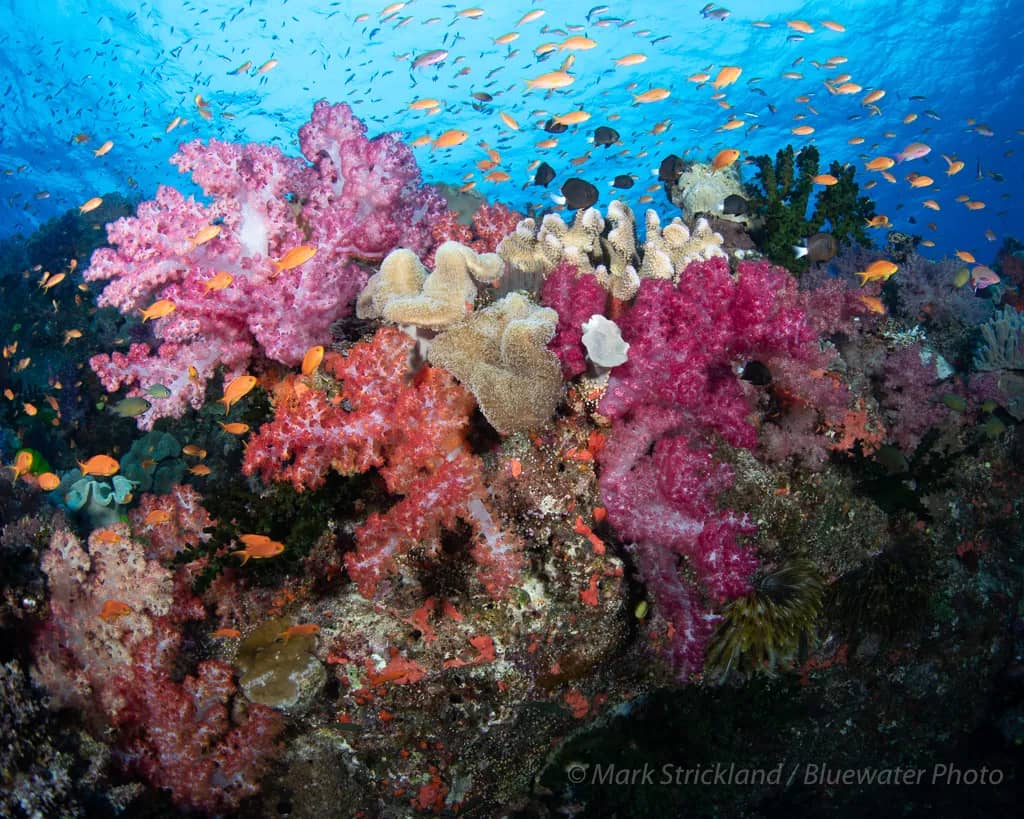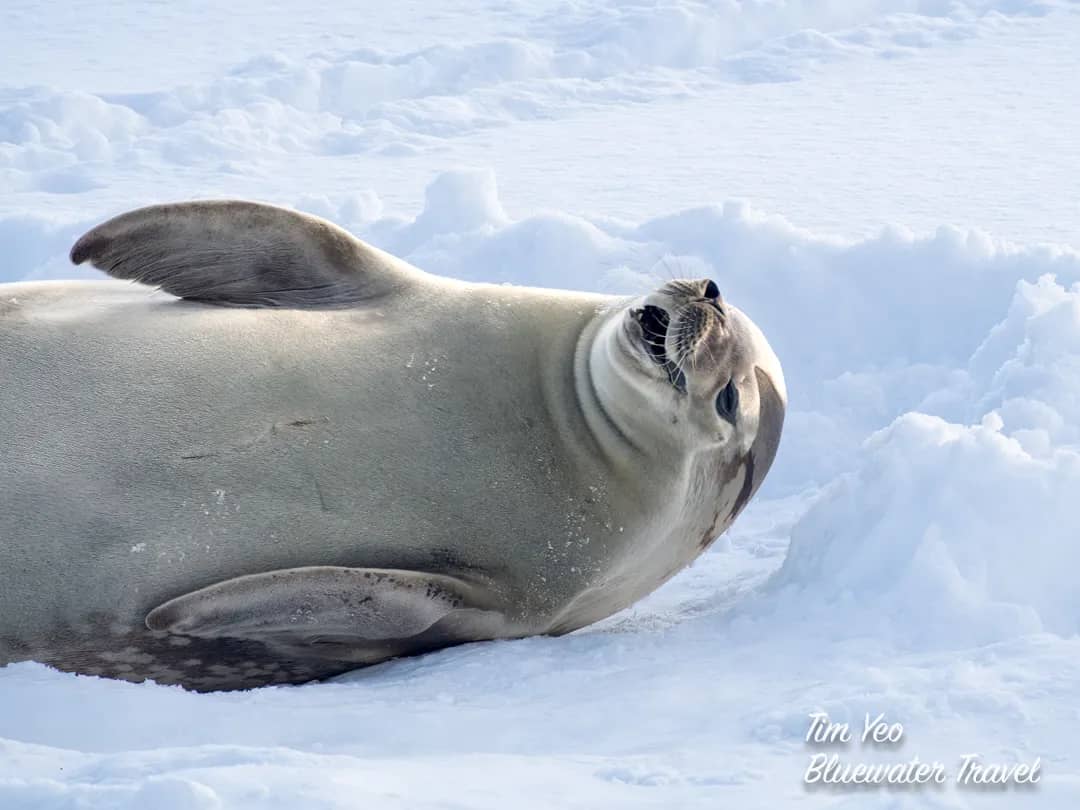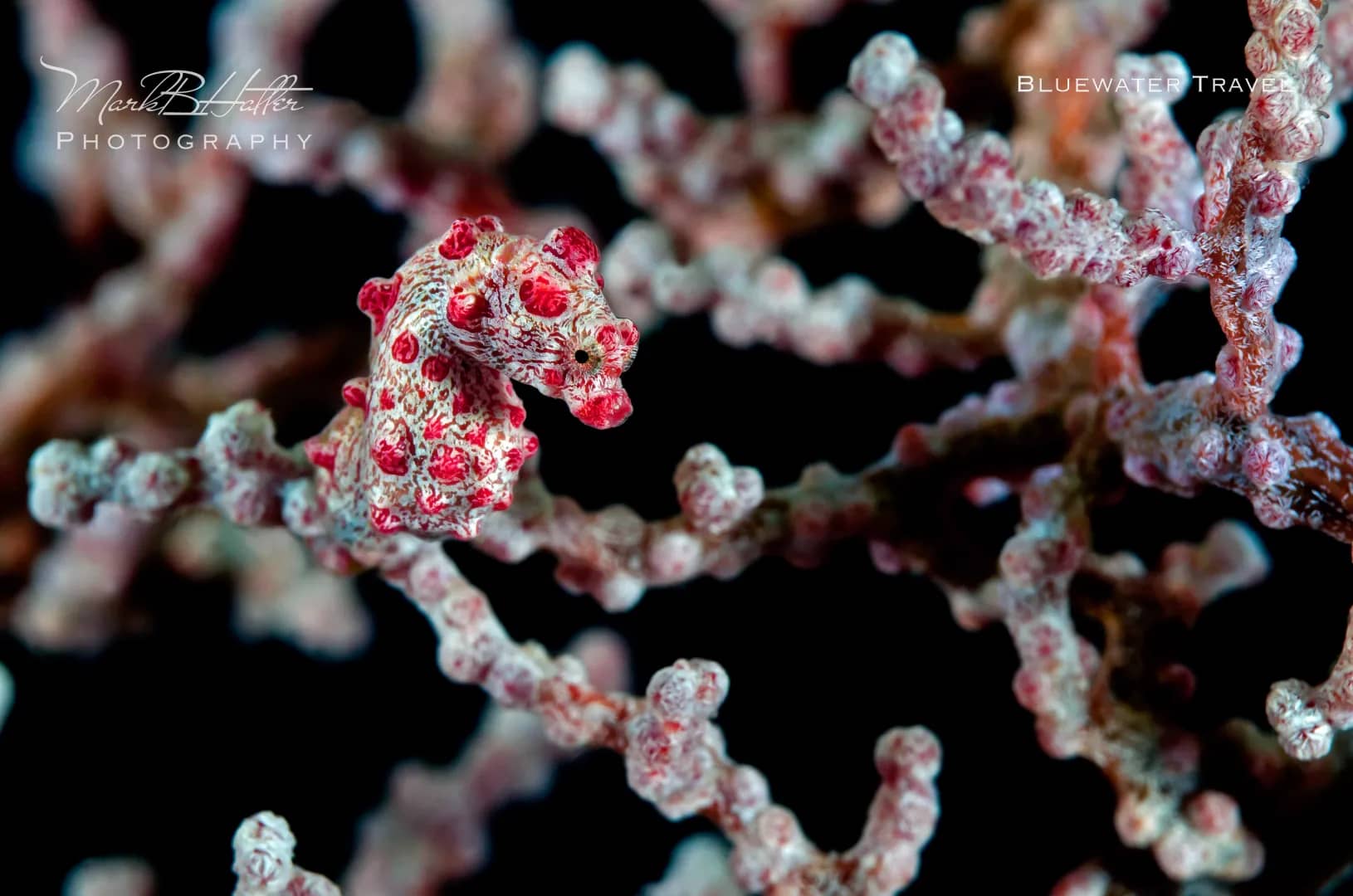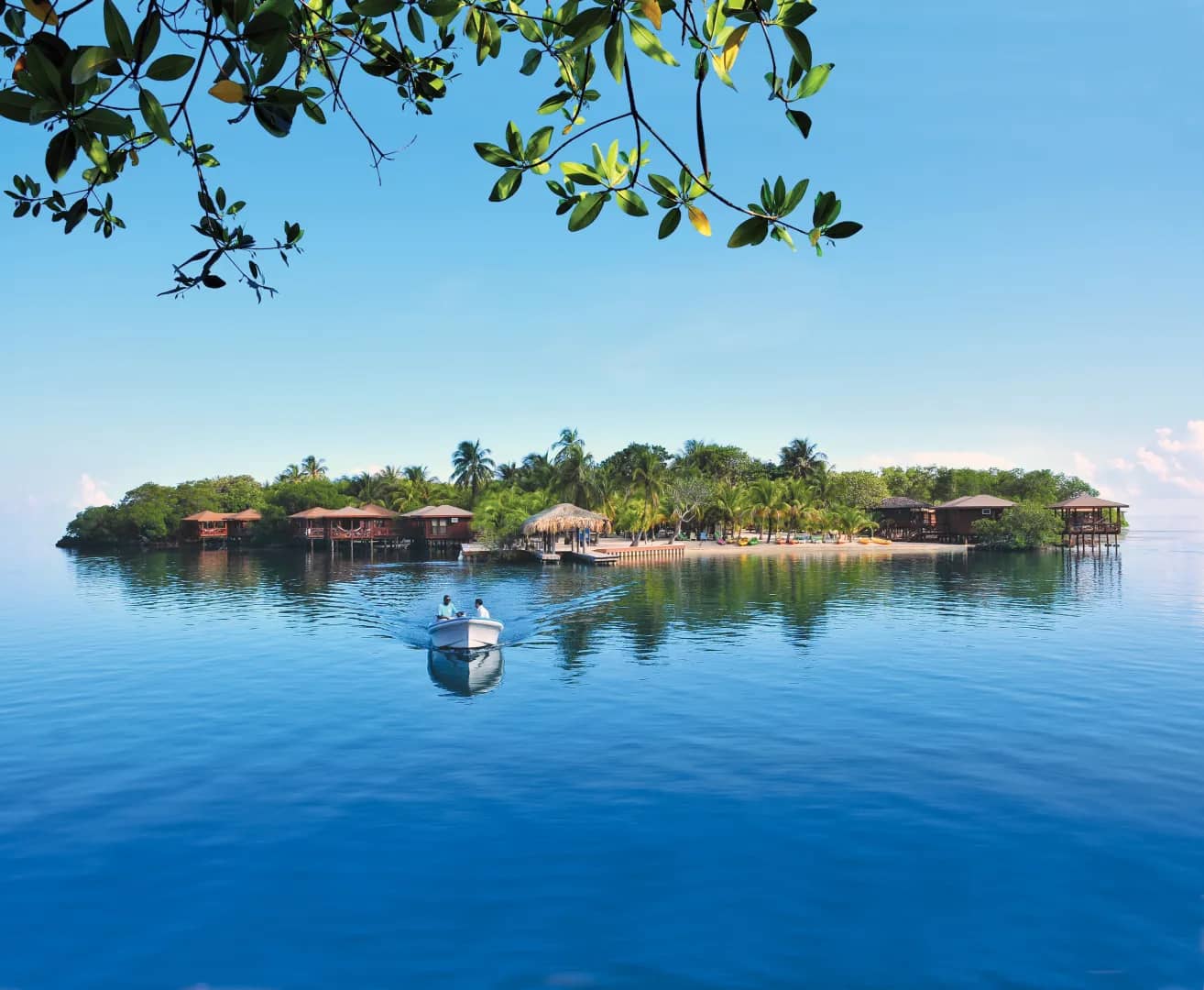Best Scuba Diving in the USA
Despite falling on our doorstep, surprisingly few of us dive regularly in the USA. But with 30 states enjoying coastline stretching 95,500 miles along both the Atlantic and Pacific Oceans and the Gulf of Mexico, the USA is home to some of the world's best scuba diving. From the breathtaking underwater landscapes of Alaska to the huge Florida shipwrecks, tropical reefs of Hawaii, and Californian kelp foreststhere's something for everyone!
On top of all that, many dive sites are easily accessible and serviced by reputable and well-run operators. Why wait for your annual dive vacation when you could be exploring new and exciting sites every week?
With such a variety of amazing dive spots, deciding on the best place to dive in the United States is no easy task. But worry not! We've rounded up a list of the best scuba diving spots in the US, complete with information on what to see, when to go, and where to stay so that you can pick the perfect spot for your next dive trip hassle-free!
USA's Best Diving Spots
Pick a destination or scroll down to read the entire list:
- La Jolla Cove, San Diego - Ocean Fun for the Whole Family
- Yukon Wreck, San Diego - The Highlight of San Diego's Wreck Alley
- Catalina Island, Southern California - The Perfect Weekend Dive Getaway
- Kona, Hawaii - Exotic Diving with a Familiar Touch
- Point Lobos, Monterey - Stunning Scenery Above and Below the Waterline
- Key Largo, Florida - Something for Everyone
- Oil Rigs, Southern California - Fascinating Diving on a Unique Artificial Reef
- Flower Garden Banks, Texas - The Gulf of Mexico's Hidden Gem
- Sand Tiger Sharks, North Carolina - Personal Encounters with Big Sharks
- San Juan Islands, Washington - The Best of the Northwest
- Bonus: Phil Foster Park, Florida - Exotic Critters in an Urban Setting
Can't wait to start planning your next dive trip? Our team at Bluewater Travel can help you book a resort or liveaboard in the USA or anywhere in the world.
1. La Jolla Cove, San Diego
A tiny beach tucked between Southern California's sandstone cliffs, La Jolla Cove is famous as one of the most picturesque spots in the state. Small surf and excellent underwater visibility make this a popular spot with swimmers, snorkelers, and divers in the summer months. The cove falls within the 6,000-acre San Diego La Jolla Underwater Park Ecological Reserve, and so the marine life is in great health. There are several dive sites within the immediate La Jolla beach area, offering a range of habitats to explore.
Ocean Fun For The Whole Family
Orange garibaldi fish are a common sight among the kelp forests rising from the seabed, while wrasse, gobies, and huge bass lurk in the shadows. Lucky visitors may spot a shoal of bat rays passing through, and California sea lions provide constant entertainment. Other marine species include guitarfish, lobsters, stingrays, turtles, and moray eels. In the summer months, female leopard sharks can be found close to shore in shallow waters, and observant divers may spot a sevengill shark between April and June.
How To Dive La Jolla Cove
There are a good number of local dive operators that run dive and snorkel trips to La Jolla Cove. However, it is also possible to visit and dive independently. The best diving can be accessed straight off the beach and coastline. Be sure to check local weather and surf reports as part of your dive planning. La Jolla Cove is diveable year-round, with plenty to see even during winter, though surf and surge may complicate entry and exit at times.
La Jolla Cove is a popular tourist destination and can become busy during summer. However, there are a variety of accommodation options to suit all budgets. The nearby Children's Pool Beach, home to a harbor seal colony, is a fun place to visit. The closest airport is San Diego International Airport (SAN), located about 20 minutes away from La Jolla Cove.
Diving Conditions
Temperature: 55 to 72F (12 to 22C), with the warmest temperatures in September and the coolest in February.
Visibility: Up to 30 feet (10m) during summer.
Non-Diving Activities: Swimming, snorkeling, and other watersports.
Required Skill Level: Suitable for all levels.
2. HMCS Yukon Wreck, San Diego
Sunk as an artificial wreck in July 2000, the HMCS Yukon was a decommissioned Canadian Navy destroyer purchased by the San Diego Oceans Foundation to enhance the local scuba diving scene. The wreck lies on its port side at a depth of 100 feet (30m) and features many additional penetration points cut into the superstructure during the cleaning process. As the largest and most intact wreck in San Diego's Wreck Alley, the Yukon attracts divers from across the country, offering a chance to explore its 366-foot, 100-compartment structure.
The Highlight Of San Diego's Wreck Valley
The Yukon's well-lit corridors can be deceptively disorienting for inexperienced divers. Highlights include the engine room with both engines intact, the rudder room, the operations room with plaques honoring the project, and 'Burma Road,' a passageway running the length of the ship. Keeline Cove, another section, features artwork by Mike Keeline. Over time, the wreck has become home to various marine creatures, including many species of nudibranchs.


How To Dive The Yukon
The Yukon is particularly popular in the summer, with several dive boats moored around the site. First-time visitors are encouraged to book with a local dive operator for a full orientation before exploring independently. Although diveable year-round, water temperatures drop, and winter surges and swells can reduce visibility and complicate diving conditions.
The wreck is a 10-minute boat ride from Mission Bay Harbor. Visitors can find plenty of hotels and guest houses within walking distance of the harbor, along with the full range of accommodation options offered in the greater San Diego area. San Diego International Airport (SAN) is the closest airport.
Diving Conditions
Temperature: 48 to 70F (9 to 21C), with the highest temperatures in September and the lowest in February.
Visibility: 15 to 40 feet (5 to 12m).
Non-Diving Activities: San Diego offers a variety of attractions and activities, many focused around the water.
Required Skill Level: Suitable for intermediate and advanced divers.
3. Catalina Island, Southern California
Catalina, officially Santa Catalina Island, is part of the Channel Islands group off the Pacific coast, southwest of Los Angeles. A short ferry ride from the mainland, Catalina offers visitors a charming escape from the city.
The Perfect Weekend Dive Getaway
The island's coastline features over 50 dive sites, with many located along the landward side. Diving here is known for the large Californian kelp forests that rise from depths of 65 feet (20m) to around 25 feet (5m) below the surface. The waters are home to California sea lions, giant black sea bass, and angel sharks, often seen among the kelp or resting on the sandy bottom.
Bluewater Trip Leader, Tim Yeo, says, "One of my favorite types of diving is swimming through the kelp forests off our California coast. It feels like a magical hike through an enchanted redwood forest, with sunbeams filtering between the trees only underwater."
Catalina Dive Park at Casino Point is a popular shore diving location. Here, divers can spot octopuses, giant kelpfish, moray eels, garibaldi, bat rays, and sheepshead. In summer, black sea bass and macro photography opportunities also attract underwater photographers. Many divers take the ferry from Long Beach to Avalon for a day of shore diving at Casino Point.
.JPG.JPG)
.JPG.JPG)


How To Dive Catalina Island
There are many ways to enjoy diving on Catalina Island, whether you prefer shore or boat diving. From the mainland, dive boats depart from San Pedro or Long Beach, with the journey taking 90 minutes to 2 hours. For those staying on the island, local dive operators offer boat charters from Avalon or Two Harbors, or visitors can rent boats themselves. Shore diving is also popular, with Two Harbors Campground and Casino Point offering easy access to dive sites and fill stations.
Catalina Island is diveable year-round, but the best conditions are in August and September when the water is warmest, and visibility is at its peak. The island offers a variety of accommodations, making it a favorite weekend getaway. Long Beach Airport (LGB) and Los Angeles International Airport (LAX) are the nearest airports, with convenient ferry connections to Catalina from Long Beach.
Check out this video of a GoPro Hero 8 test during a scuba diving trip at Catalina Island:
Diving Conditions
Temperature: 56 to 70oF (13 to 21oC), with the warmest temperatures in August and September. Winter thermoclines can drop as low as 50oF (10oC).
Visibility: Averaging 40 feet (12m), though summer plankton blooms can reduce it to under 20 feet (6m).
Non-Diving Activities: Explore Catalina's towns of Two Harbors and Avalon, or enjoy a nature tour or sealife safari.
Required Diving Skill Level: Suitable for all levels.
4. Kona, Hawaii
Scuba diving Hawaii offers a wealth of marine adventures. Among its many dive sites, Kona stands out as a hub for unique experiences.
Exotic Diving With A Familiar Touch
Kona's western shoreline features over 50 dive sites, each promising unforgettable underwater adventures. One of the most thrilling activities is night diving with manta rays. These gentle giants feed on plankton drawn to the lights along Kona's coastline, creating a magical night-time display. Another favorite activity is blackwater diving, where divers are taken offshore and suspended mid-water to witness rare marine life drifting by at night.
The volcanic origins of the Big Island provide Kona with diverse underwater terrain, including lava tubes, tunnels, grottos, and large boulders. Kona diving offers encounters with Hawaiis endemic fish species, sea turtles, reef sharks, and manta rays. Lucky visitors may also spot humpback whales or hammerhead sharks. Two Step, located just south of Kona, is a favorite site for families, providing easy access to sea turtles and vibrant tropical fish.


How To Dive Kona
Hawaii's tropical climate allows for year-round diving in Kona, making it a popular vacation destination. Air and water temperatures peak in September, which can be too warm for some, resulting in fewer tourists during September and January.
Diving is managed by land-based operators, offering a mix of beach and boat dives, depending on the site. Accommodation options range from budget-friendly hostels and vacation rentals to luxurious resorts.
Honolulus Daniel K. Inouye International Airport (HNL) on Oahu serves as the main entry point. However, direct flights are available from Los Angeles (LAX) to Ellison Onizuka Kona International Airport (KOA). Many flights from Europe connect through the US, while Asian flights often route through Japan. Once on the islands, inter-island flights and ferries are available, though flights can be expensive during peak seasons.
Diving Conditions
Temperature: 75 to 80oF (24 to 27oC).
Visibility: 75 to 100 feet (25-30m), depending on rainfall and run-off.
Non-Diving Activities: Surfing, stand-up paddleboarding (SUP), hiking, and volcano tours.
Skill Level: Suitable for all levels, including snorkelers.
5. Point Lobos, Monterey
Point Lobos State Natural Reserve is a picturesque park located on the Monterey Peninsula at the northern end of Big Surs coast. Known as the "crown jewel" of Californias state parks, Point Lobos includes two marine protected areas, offering rich habitats where seals, sea lions, otters, and even migrating whales can be found among smaller marine creatures.
Stunning Scenery Above And Below The Waterline
Underwater, conditions vary, but when favorable, the diving is exceptional. Pinnacles and gulleys teem with encrusting life, sea anemones, corals, and sponges. Kelp forests cover shallower areas, while deeper zones feature giant white-plumed anemones. Due to the quality of the diving, planning ahead is essential, as the site is very popular.
How To Dive Point Lobos
Diving at Point Lobos requires a permit, with a daily limit of 15 buddy pairs allowed. Most visitors explore the site as a shore dive, entering the water through a straightforward path. Small boats can also be launched (with a permit) for access to specific dive sites. Visit the California State Parks website for a detailed list of diving regulations.
Since Point Lobos is a popular destination, it can become crowded during peak seasons. The nearby town of Carmel offers galleries, museums, and gastropubs for post-dive exploration. Monterey Regional Airport (MRY), just 15 minutes from Carmel, provides both domestic and limited international flight options.
Diving Conditions
Temperature: 53 to 57oF (12 to 14oC) year-round.
Visibility: 20 to 70 feet (6 to 21m).
Non-Diving Activities: Hiking around the park or visiting the museum at Whalers Cove.
Required Skill Level: Suitable for all levels.
6. Key Largo, Florida
The first major stop on the Overseas Highway which connects the Florida Keys with mainland USA, Key Largo is part of the third-largest barrier reef in the world and the diving here is suitably impressive. The area boasts such a variety of enjoyable wrecks and reefs to explore that it's almost impossible to select a favorite site. Miles of spur and groove formation reef complete with swim-throughs and drifts are home to many vibrant tropical fish species, as well as turtles, nurse sharks, rays, and even the occasional hammerhead.
Something For Everyone
The best-known wreck in the area is the USS Spiegel Grove, a huge US Navy Landing Ship Dock that was sunk in 2002 as an artificial wreck. Although originally lying on her starboard side, Hurricane Dennis in 2005 flipped the huge superstructure upright, and she now rests at a depth of 45 to 135 feet (15 to 40m). Encrusting corals have already created a patchwork of color across every exposed surface, while schools of small tropical fish flash to and fro and larger groupers loiter in the nooks and crannies.
How To Dive Key Largo
Key Largo's popularity as a dive destination means there are dozens of dive shops and operators available to arrange kit hire, guides, or boat trips to local sites. From small family-run guesthouses to self-catered villas and resorts, there is accommodation to suit all tastes and budgets.
The closest airports are Miami International Airport (MIA) and Fort Lauderdale-Hollywood International Airport (FLL) from where you can drive or take a shuttle the hour south to Key Largo.
Key Largo is diveable year-round; however, August and September have a higher chance of hurricanes, and the water is coolest in January and February.
Diving Conditions
Temperature: 75 to 82F (24 to 27C), with the warmest temperatures between June and October.
Visibility: 60 to 80 feet (18 to 24m).
Non-Diving Activities: Snorkeling, SUPing and boat rental, nature trails and wildlife sanctuaries.
Required Skill Level: Divers of all abilities will find suitable sites.
7. Oil Rigs, Southern California
The stretch of coastline between Santa Barbara and Huntington Beach is home to over 25 oil platforms, and these huge structures are awesome artificial reefs, creating a wall-type environment for a vast array of encrusting marine life. As well as soft corals, sponges, anemones, and millions of barnacles, divers can discover all manner of macro clinging to the metal structures.
Fascinating Diving On A Unique Artificial Reef
The oil platforms sit 8 miles offshore and create a refuge for passing pelagics, including sharks, rays, and Mola mola, as well as schools of sardine and mackerel. Resident species include the full range of Southern Californian marine life, such as garibaldi, rockfish, sheepshead, opal eye, and blacksmith.
The three platforms that diving is permitted on are Elly, Ellen, and Eureka. Eureka reaches depths of 720 feet (220m), and so attracts technical divers to explore the deeper reaches. All three rigs attract recreational divers as there is some fantastic marine life between 30 and 100 feet (9 to 30m), with sea lions often diving off the rigs to play with divers on their safety stop. Because of the open ocean nature of these dives, conditions can vary from easy to challenging.
Interested in diving with sharks? Check out our list of the Best Shark Diving in the World.
How To Dive The Oil Rigs
Only accessible by day boat, various charters depart regularly from Long Beach and San Pedro. Check with local dive shops to find out when they are running trips. The oil platforms are too deep for anchorage, so live drops and live pickups are the standard procedure for dive boats. One visual and one audible signaling device are essential in case the current pulls divers away from the site. Be prepared for heavy seas, swell and surge, thermoclines, and limited visibility.
Los Angeles draws tourists from all over the US and overseas, so there is no shortage of accommodation, attractions, and entertainment. The closest airports are Los Angeles International Airport (LAX) and Long Beach Airport (LGB).
Diving Conditions
Temperature: 56 to 70F (13 to 21C), with the warmest temperatures in August and September.
Visibility: Very variable, up to 140 feet (42m), although occasional plankton blooms in the summer can reduce visibility to less than 20 feet (6m).
Non-Diving Activities: The Orange Coast is famous for its beaches, as well as other family attractions.
Required Diving Skill Level: Advanced due to open ocean conditions.
8. Flower Garden Banks, Texas
Located 110 miles due south of the Texas/Louisiana border, Flower Garden Banks National Marine Sanctuary is an unexpected oasis for tropical species in the northern Gulf of Mexico. Three ancient subsurface salt domes provide a solid substrate for polyps and larvae carried north on Caribbean currents, and the region's warm, sunlit waters provide the ideal habitat for tropical species to thrive. While East and West Flower Garden Banks display huge boulder-shaped coral formations piled on top of one another, the more northerly Stetson Bank is characterized by encrusting corals and many sponges.
The Gulf Of Mexico's Hidden Gem
The marine life within Flower Garden Banks National Marine Sanctuary has been heavily researched and documented since it was first discovered in the early 1900s and is now protected through the NOAA's Office of National Marine Sanctuaries. With the top of each reef starting at around 60 feet (18m), divers can expect to spot a huge variety of tropical life, including over 20 types of coral and hydroid, squid and octopus, hundreds of crustaceans including eight species of mantis shrimp, and over 200 species of tropical reef fish including angelfish, batfish, butterflyfish, cardinalfish, snapper, surgeonfish, and larger ocean-going species such as barracuda, jack, mackerel, and even Mola mola. Add to this the hawksbill and loggerhead turtles, schooling hammerheads in early spring, whale sharks and manta rays in the late summer, as well as several types of whale and dolphin, and this little piece of tropical paradise is complete.
How to Dive Flower Garden Banks
Flower Garden Banks is only accessible by boat, and several dive charters run regular 2- or 3-night trips to dive the area from coastal towns such as Freeport and Sabine Pass. For those visiting on a private boat, there are various sanctuary regulations to be aware of, as well as regular heavy swells and changeable currents.
There are various airports in the Texas area, but one of the closest to the southern coast is Houston George Bush Intercontinental Airport (IAH). There are also a multitude of towns and resorts along the Gulf of Mexico coastline. Flower Garden Banks can be dived year-round, and the species you spot will vary with the season.
Diving Conditions
Temperature: 68 to 84oF (20 to 29oC).
Visibility: Upwards of 100 feet (30m) in the summer.
Non-Diving Activities: Fishing and snorkeling.
Required Skill Level: Dives start at 60ft (18m), so are too deep for beginners.
9. Sand Tiger Sharks, North Carolina
Stretching the entire length of the North Carolina coast, the Outer Banks is a notoriously hazardous series of barrier islands that has claimed thousands of shipwrecks and earned itself the title of Graveyard of the Atlantic. The wrecks that litter the seabed here are now a network of artificial reefs, attracting a host of temperate and semi-tropical species, including, most notably, the sand tiger shark.
Personal Encounters With Big Sharks
Sand tigers follow the warm Gulf Stream current, migrating south to eastern Florida through the winter. As such, the best time to dive with them is when they return to the Outer Banks to breed between May and October. While they may appear fearsome and can grow up to 10 feet in length, sand tiger sharks pose little threat to divers. They are extremely curious and don't startle easily, but their mouth is designed to grasp smaller fish rather than bite at large prey. Several individuals can be found patrolling many of the offshore wrecks throughout the summer, but at the right time of year and in favorable conditions, large schools of up to 100 individuals have been known to create a wall of sharks as far as the eye can see. For the ultimate sand tiger shark encounter, divers can penetrate wrecks such as the Aeolus and the Caribsea and come face-to-face with sharks within the submerged cabins and passageways.
You may want to check out Shark Cage Diving. Read our article here...


How to Dive with Sand Tiger Sharks
While a small population of resident females has been identified along the Outer Banks, the best chance of encountering sharks is between May and October. This is also when sea conditions are most favorable, with warmer water and better visibility. However, conditions can change rapidly, and the hazardous nature of the Outer Banks is just as applicable to divers as it is to other sea goers.
There are many dive operators that will take divers on day trips departing from Cape Hatteras, Cape Lookout, and several other Outer Banks islands. The most popular wrecks lie between 15 and 20 miles offshore, and the transit from either Cape Hatteras or Cape Lookout can take several hours, depending on the site.
The closest airport is Norfolk International Airport (ORF), and the Outer Banks is a 2.5-hour drive south. Once on the islands, various sleepy villages and seaside towns offer a range of accommodation to suit all tastes.
Diving Conditions
Temperature: 70 to 80oF (21 to 26oC) in the summer.
Visibility:30 to 100 feet (9 to 30m), although this varies due to currents.
Non-Diving Activities: Enjoy scenic drives, hiking, watersports, or learning about the history of the local area.
Required Skill Level:Intermediate due to deeper dives and changeable conditions.
10. San Juan Islands, Washington
The San Juan Islands are an archipelago off the coast of Washington State made up of the four main islands of San Juan, Orcas, Lopez, and Shaw, as well as over 400 other smaller islands and outcrops in the Salish Sea. Ten of the islands are designated State Parks, and a large swathe of uninhabited area is encompassed within the San Juan National Wildlife Refuge. While diving is possible wherever access to the islands is permitted, there are certain sites, such as Strawberry Island West Wall, Long Island West Wall, Whale Rocks, and Peavine Pass, that stand out as exceptional sites.
The Best Of The Northwest
The inland, nutrient-rich waters of Washington are one of the most diverse marine environments on the planet, and divers can discover the full range of Pacific Northwest marine life, including wolf eels, giant pacific octopus, Puget Sound crabs, rockfish, decorated and mosshead warbonnets, scalyhead sculpin, and lingcod amongst thick kelp forests and rocky reefs. This colorful array of life is due to the brisk currents that forge their way through the San Juans, creating exciting but often challenging dives. When conditions are right, the diving here is nothing short of spectacular.
How to Dive the San Juan Islands
There are several dive operators throughout the San Juan Islands, particularly on San Juan Island, which runs tours year-round. However, dive conditions can change rapidly, and divers are encouraged to join guided trips to make the most of the incredible underwater world. Getting to the San Juan Islands involves a ferry system that connects them to mainland Washington. The closest major airport is Seattle-Tacoma International Airport (SEA), located about 80 miles south of Anacortes, the primary ferry terminal for the islands.
Diving Conditions
Temperature: 40 to 60oF (4 to 15oC) depending on the season.
Visibility: 30 to 100 feet (9 to 30m).
Non-Diving Activities: Kayaking, whale watching, and hiking.
Required Skill Level: Intermediate, as strong currents and colder temperatures make these dives more challenging.
Accommodation ranges from campsites and rustic cabins to cozy B&Bs, simple hotels, and more elegant resorts.
See this amazing video of diving the San Juan Islands:
Diving Conditions
Temperature: 46 to 55oF (5 to 12oC), with July to September the warmest months.
Visibility: 3 to 50 feet (1 to 15m), although this varies depending on the tide.
Non-Diving Activities: Camping, hiking, kayaking, whale and orca watching.
Required Skill Level: Intermediate.
BONUS: Phil Foster Park, Florida
This shallow, protected lagoon is the setting for one of the top critter sites in the US. Located under Blue Heron Bridge in West Palm Beach, Phil Foster Park is an exceptional dive site offering easy access to some very unique species.
Exotic Critters In An Urban Setting
Top of the list, seahorses and pipefish can be found in abundance, along with over 100 species of nudibranch, frogfish, sea robins, flying gurnards, and stargazers. The lagoon is a nursery ground for all manner of juvenile reef fish, too, as well as larger batfish, eagle rays, schooling spadefish and jacks, barracuda, and several species of octopus. Lucky divers might even spot a manatee.
What makes Phil Foster Park so popular is its accessibility. With car parking and beach facilities, separate swimming and boating areas, and a maximum depth of around 20 feet (6m), divers and snorkelers of all levels can enjoy discovering the wealth of marine life on offer. There is even an 800ft (240m) long snorkel trail, formed of artificial boulder reef and home to countless tropical fish.




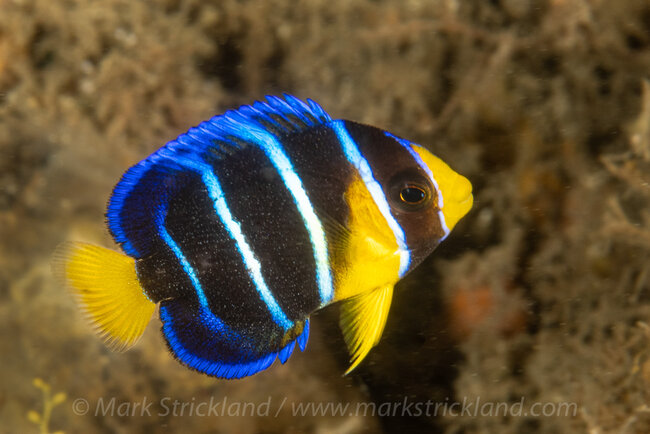

How To Dive Phil Foster Park
Phil Foster Park is one of the easiest sites to dive year-round; just follow a few simple guidelines. Divers and snorkelers must stay clear of the boat channel and the guarded swim area and carry a dive flag at all times. Entry is free, but diving is only allowed between sunrise and sunset without a special permit.
Because of the park's location within the Intercoastal Waterway close to the sea inlet, tidal flow can be quite strong and visibility close to nil. Therefore, it is essential to time dives according to the tide. The best visibility is generally on the incoming tide, from around half-tide through to slack high tide. However, as soon as the tide turns and starts to fall, visibility quickly deteriorates. The best time to enter the water is shortly before high tide, and be sure to consult tide tables specific to Blue Heron Bridge or dive with a local guide.
West Palm Beach offers all the usual accommodation options found in a coastal city and is easily accessible by a well-connected road and transit system. The closest airport is Palm Beach International Airport (PBI); however, Miami International Airport (MIA) is also within close range.
Diving Conditions
Temperature: 71 to 85oF (22 to 29oC).
Visibility: 8 to 40 feet (3 to 12m), affected by the tides.
Non-Diving Activities: Swimming and snorkeling, boating, fishing, or simply enjoying the beach.
Required Skill Level: Suitable for all levels of diver and snorkeler.
Other Places To Dive In And Nearby The USA
While this article focuses on diving in the continental USA and Hawaii, there are many other fantastic dive destinations in US Overseas Territories that we didn't have space to mention. American Samoa in the South Pacific boasts some of the largest coral heads in the world, while Guam is home to pristine German and Japanese WWII wrecks. In the Caribbean, the US Virgin Islands and Puerto Rico offer relaxed but colorful tropical diving along healthy reef systems.
Find more inspiration for diving in and around the USA. Learn about the best destinations that are easy to travel to so you can maximize your holiday time and minimize travel time!
Plan Your Next Dive Vacation
Bluewater Travel is a full-service dive travel agency. We can book you a resort or a liveaboard almost anywhere in the world at the same price, or even lower, than booking any other way. Our team of travel advisors has been to most of these places, some of them even many times. We know the diving, resorts, liveaboards, and logistics better than anyone else in this industry. To get started, you can email us to start planning your trip or complete the form below.
Further Reading
Check out these useful resources from our sister websites, Bluewater Photo and Underwater Photography Guide.
Catalina Island Diving & Underwater Photography Guide
Pacific Northwest Destination Guide
Fascinating Creatures of the Pacific Northwest
Macro Surprises at Blue Heron Bridge
